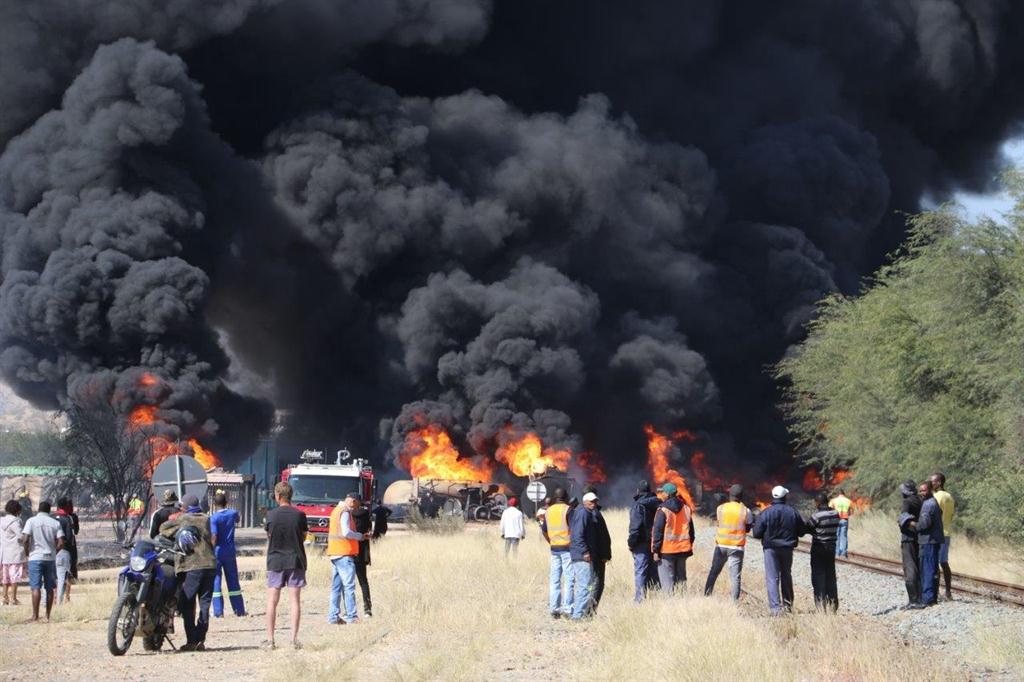Old railway to blame for accidents
Most accidents are due to railway vehicles being very old and the railway network not being maintained as it should be, TransNamib CEO Johny Smith said.
TANJA BAUSE
WINDHOEK
In the last four months, six TransNamib locomotives and 42 wagons have derailed, while one person died in a train crash.
Only four days after nine TransNamib fuel wagons derailed and caught fire at Brakwater outside Windhoek, another train accident took place at the Kranzberg train station between Karibib and Usakos.
At a press conference, TransNamib CEO Johny Smith it has been “a very bad week” for the rail operator.
"Accidents happen, but they must be seen in perspective.”
He said in the last financial year that ended on 31 March, they had 53 accidents.
“In the financial year before that, we reported only 14 accidents. It was also the year we were in a state of emergency. In the financial year 2018/2019, we had 60 accidents and before that 68.”
Accident categories
He added accidents fall into two categories.
"There are big accidents like the one on Tuesday and then there are small accidents or incidents where someone from the public is usually involved. These are accidents involving a person or vehicle that usually occur at a level crossing.”
According to him, these types of accidents are 20% of all the accidents and are mostly fatal.
Smith said in the last financial year, no one died in an accident and in the two years before that, three and two people died respectively.
“On average, we have three people a year who have died in accidents in the last four years. A total of 462 people died on the roads in one year."
According to him, in the last four years, there have been only two major derailments per year where locomotives and wagons have been damaged.
Old railway
"Sixty percent of the accidents are due to our railway vehicles being very old and our railway network not being maintained as it should be. Our locomotives drive an average of 4 000 kilometres per day. This means they drive from the south to the north of the country and back every day. They drive an average of 1.4 million kilometres a year and all our locomotives are 50 years old,” he said.
According to Smith, the rail network belongs to the government and it must maintain the railways and the roads.
WINDHOEK
In the last four months, six TransNamib locomotives and 42 wagons have derailed, while one person died in a train crash.
Only four days after nine TransNamib fuel wagons derailed and caught fire at Brakwater outside Windhoek, another train accident took place at the Kranzberg train station between Karibib and Usakos.
At a press conference, TransNamib CEO Johny Smith it has been “a very bad week” for the rail operator.
"Accidents happen, but they must be seen in perspective.”
He said in the last financial year that ended on 31 March, they had 53 accidents.
“In the financial year before that, we reported only 14 accidents. It was also the year we were in a state of emergency. In the financial year 2018/2019, we had 60 accidents and before that 68.”
Accident categories
He added accidents fall into two categories.
"There are big accidents like the one on Tuesday and then there are small accidents or incidents where someone from the public is usually involved. These are accidents involving a person or vehicle that usually occur at a level crossing.”
According to him, these types of accidents are 20% of all the accidents and are mostly fatal.
Smith said in the last financial year, no one died in an accident and in the two years before that, three and two people died respectively.
“On average, we have three people a year who have died in accidents in the last four years. A total of 462 people died on the roads in one year."
According to him, in the last four years, there have been only two major derailments per year where locomotives and wagons have been damaged.
Old railway
"Sixty percent of the accidents are due to our railway vehicles being very old and our railway network not being maintained as it should be. Our locomotives drive an average of 4 000 kilometres per day. This means they drive from the south to the north of the country and back every day. They drive an average of 1.4 million kilometres a year and all our locomotives are 50 years old,” he said.
According to Smith, the rail network belongs to the government and it must maintain the railways and the roads.





Comments
Namibian Sun
No comments have been left on this article